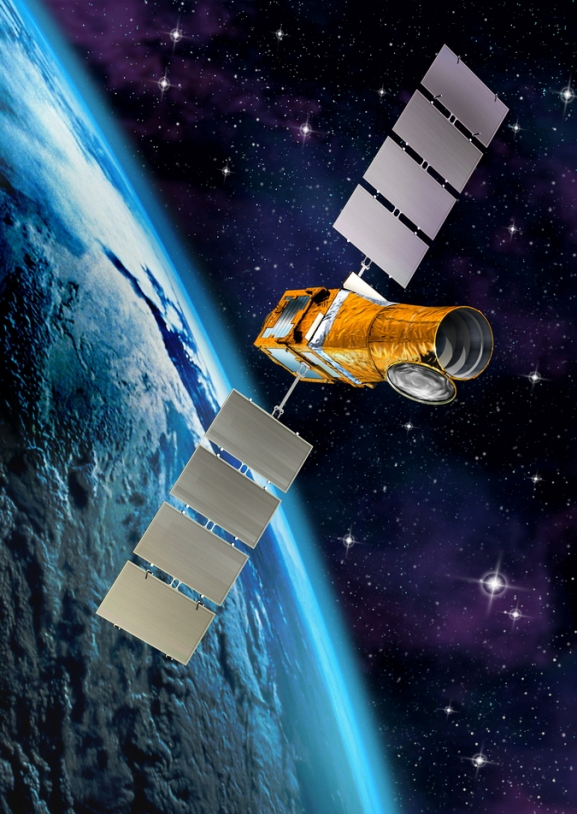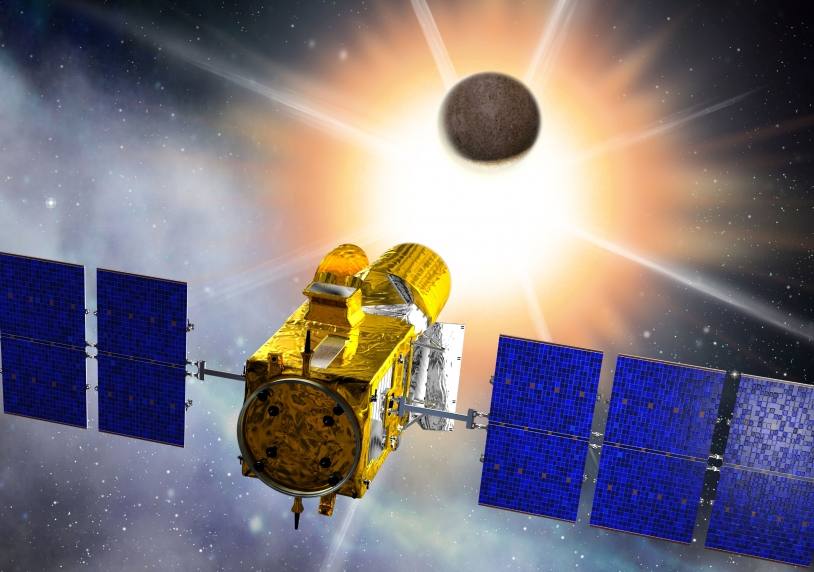28 December 2006

At 15:23 Paris time, the 16 rocket motors of the Soyuz launcher’s 1st stage split the Kazakh dusk with a deafening roar, lifting skywards some 300 tonnes of fuel and high-tech equipment, including the 630-kg COROT satellite. Fifty minutes later, the last stage placed COROT with perfect precision into its planned 900-km orbit.
The launch was emblematic in more ways than one for CNES, marking the maiden flight of the Soyuz 2-1B variant to be operated for the Soyuz in Guiana programme, as well as the departure of the 1st satellite equipped to discover new Earths and peer inside stars. CNES was prime contractor from start to finish on this programme.
Years of effort rewarded
For many French research scientists and CNES engineers, the launch was the culmination of 12 years of unremitting effort. It is not hard to imagine the tension they all were feeling until confirmation was received that COROT had been successfully orbited, and the subsequent scenes of intense joy and emotion.

“We will also be assessing the instrument’s sensitivity to the terrestrial radiation environment”, says the mission’s System Manager Laurent Boisnard.
1st light
The instrument’s shutter will only be opened after this 2-week calibration phase, when COROT will start peering at the light from stars in the Unicorn constellation, to the left of Orion, the great hunter bestriding the winter night sky.

Depending on how preliminary testing goes, COROT should be ready to generate its 1st scientific results within 1 to 2 months. After the wonderful late Christmas present of a successful launch, the winter ahead holds untold promises for COROT.